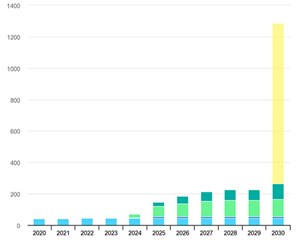Articles
Digitalization and the energy transition
Editorial Comment
T. CAMPBELL, Managing Editor, H2Tech
Digitalization will play a significant role in the global energy transition. In accordance with this future, H2Tech has transitioned into a completely digital publication. Furthermore, we have switched from a quarterly publication to a monthly schedule. With this transition, we will provide updates on the newest trends in hydrogen (H2) technology more frequently and grow alongside the global H2 industry.
Advances in H2 production. Natural gas may be a key component in future H2 production. Steam methane reforming (SMR) converts natural gas into gray H2, which is currently the most common method of H2 production. This H2 can be carbon neutral if combined with carbon capture and storage (CCS), making it blue H2. Several projects worldwide are striving towards this end.
According to Gulf Energy Information’s Global Energy Infrastructure database, there are 236 blue H2 projects worldwide. Many of these projects use SMR or autothermal reforming with CCS. A large portion of these projects are in North America and Europe. In the U.S., a carbon credit is now offered for each ton of carbon captured.
According to the International Energy Agency, project developers have announced ambitions for more than 200 new carbon capture facilities to operate by 2030, capturing more than 220 MMtpy of carbon dioxide (CO2).1 This is a significant increase from the 45 MMtpy of CO2 currently captured; however, only around ten commercial capture projects under development have taken a final investment decision (FIG. 1).

H2Tech Market Data Book 2023. According to H2Tech’s Market Data Book 2023, the low-carbon H2 market is poised to quadruple, with the electrolyzer market being the big contributor. The global electrolyzer market is forecast to grow at a CAGR of 6.4%, reaching more than $87 MM by 2025 and up to $271.7 MM by 2026.H2T
LITERATURE CITED
1 International Energy Agency, “Carbon Capture, Utilization and Storage,” 2022. online: https://www.iea.org/fuels-and-technologies/carbon-capture-utilisation-and-storage

